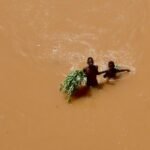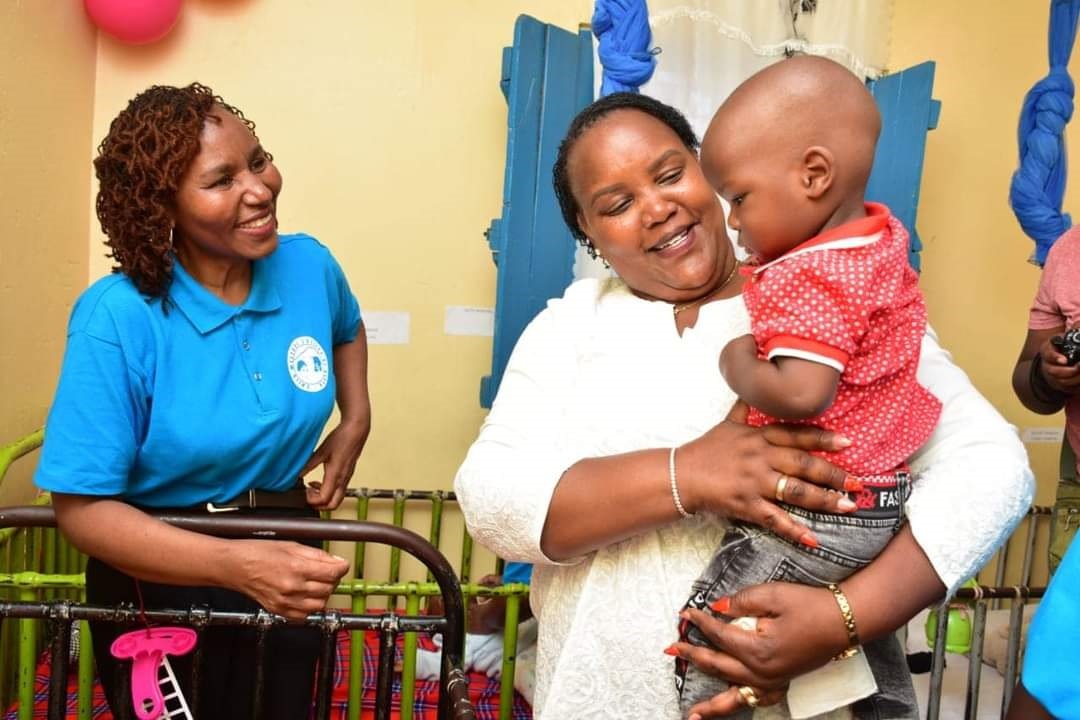Low public and private investment levels in research and development (R&D) remain a trend in most African countries. Still, this bleak narrative contrasts with knowledge production patterns by African nations as bibliometric studies of articles authored or co-authored by scientists and scholars over the past two decades show healthy annual growth, according to findings in a paper on global science funding flows in Africa.
Research publication output increased nearly tenfold from 13,470 articles in 2003 to 128,076 published articles by African academics and scientists in 2022, according to Professor Johann Mouton, director of the Centre for Research on Evaluation, Science and Technology at Stellenbosch University, South Africa.
He was speaking at a recent Science Granting Councils Initiative (SGCI) Masterclass on research funding flows in Africa in Mombasa, Kenya.
The SGCI is a multilateral initiative that aims to strengthen the capacities of science funding agencies in Sub-Saharan Africa to support research to inform policies that will contribute to economic and social development.
It is worth noting that the North African countries are increasing their relative contribution to the continent’s publication output consistently and steadily. This is a trend worth keeping an eye on as many of the infectious diseases that plague Africa – malaria, TB, sleeping sickness – correlate with the tropical and sub-tropical geographies in Sub-Saharan Africa.
“Of course, the point could also be made that climate change, with its concomitant negative impacts on water and food security, may have a disproportionate effect on the northern and desert regions of the continent, which requires dedicated investment in water and food security,” Mouton told delegates.
The Masterclass was chaired by South African academic and New York University professor and SGCI panel adviser Teboho Moja. Delegates were made up of representatives of 17 science councils in Africa, focusing on the role of the Science Granting Councils (SGCs) within an environment of insufficient public and private local funding and the imperative to find new pathways for pan-African research collaboration. R&D investment Mouton, presenting a working paper focused on the role of funding science in Africa, noted that there was consensus about the necessity of having sufficient and sustained funding for the scientific enterprise in any field.
However, there was much more contestation on the deeper issues and challenges such as the fact that most African governments do not invest sufficient public funding in science in their countries.
He reflected on the fact that, in most of the highly industrialised countries in the world, the business and private sectors contribute the highest percentages (above 50%) of gross domestic product (GDP) on R&D.
For example, in Japan, 80% of investment in R&D comes from the business sector, with the remainder from the Japanese government. Similar scenarios were found in China, Germany, Sweden and France.
Other countries with a higher percentage of income flowing from the business sector, such as Brazil and Portugal, averaged 40%. In comparison, South Africa currently stands at 35% – a serious decline from an investment of 55% in R&D in 2005.
According to the recent average gross domestic expenditure on R&D (GERD), as a percentage of GDP, the total intramural expenditure on R&D performed in the national territory during a specific reference period expressed as a percentage of GDP of the national territory, continued to lag in Africa.
The GERD/GDP for Africa is estimated at 0.33%. This compares very poorly with the average public investment by middle- and high-income countries on R&D that ranged from 2% to 3%.
When the business or private sector (including industry) invests in R&D, the burden on the state to provide public funding for science lessens, allowing it to use more of the fiscus on other social, economic and health priorities.
“As the contribution from the business sector to R&D in the country declines, the burden moves to government to fund R&D, and … governments in Africa, like elsewhere, are constrained by so many demands, [that] science and technology are, indeed, low on the agenda compared to climate change, poverty, equality, and so on. So, increasingly you really rely on foreign sources of funding,” Mouton said.
“Because of the failure of most African governments and their business sectors to support R&D in their countries over the past three decades, it has always been inevitable that many African countries (and institutions and individual scientists) had to turn to international, foreign funding to support their research and development work and even capacity-building and career-building. This – as is well documented – has created a new dependency on foreign funding with its own negative consequences,” he added.
Research production gains
On the increased research production, Mouton said African-authored papers also achieve higher than above average citation impact scores, particularly in the following scientific fields: medicine and health sciences (including mycology), fisheries, astronomy and astrophysics, and materials sciences.
However, returning to the question of funding, he said the increased output by African scholars was occurring in a context in which most African governments need to invest sufficient public funding in science in their countries.
Elaborating more on trends in publication output, a positive finding is the extent to which there has been a steady increase in foreign collaborative articles with countries outside Africa: 58% of all articles in 2022 were multi-authored papers with at least one African author compared to 34% in 2003.
But Mouton cautioned that it was not wise to focus on the increase in foreign collaboration (measured by multi-authorship) only since the trend was linked to the huge investment by international funders.
However, the increase in foreign collaborations goes hand in hand with a decline in national (within the country) collaborative papers, from 38% in 2003 to 34% in 2022. Papers where all authors are from African countries have increased slightly from constituting 1% of all papers to 3% in 2022.
“The key message that we take from these results is the clear link between the increase in overall publication output (and world share as well) which is clearly linked to a commensurate increase in foreign-authored publications.
“And the latter are most prevalent where African scientists received the biggest chunks of international funding. Stated differently, the increasing output and prominence of African science is more clearly driven by increased international collaboration which, in turn, is linked to the increased funding of research by international funders,” he said.
Lack of data
Because the majority of the 17 science councils that form part of SGCI have not done an R&D survey in recent years, Mouton added that the research team on funding flows in Africa planned to conduct deeper analysis of the state of funding in these countries, saying that the lack of recent and accurate statistics on public expenditure on R&D remains a significant source of concern.
Despite numerous attempts to conduct regular R&D surveys in most African countries, Mouton said that the fact remains that no statistics on the expenditure on R&D are available for nations such as Nigeria, Kenya, or Ghana; or where statistics are available, these are more than five to eight years old.
“This is an unacceptable situation that needs to be addressed as a matter of urgency. No informed decision-making about science investment can be done without reliable and timely data,” he said.
In his closing comments, Mouton indicated that the results presented at the Masterclass only constitute the work of the first three months of a larger study that will continue until the end of 2024.
In the remainder of the study, the team will systematically track the flow of science funding to the 17 SGCI countries in Africa by analysing the top funders in the world. The aim is to arrive at a deeper understanding of who funds science in what fields in African countries and who the beneficiaries of such funding are.
Published on the website www.universityworldnews.com




